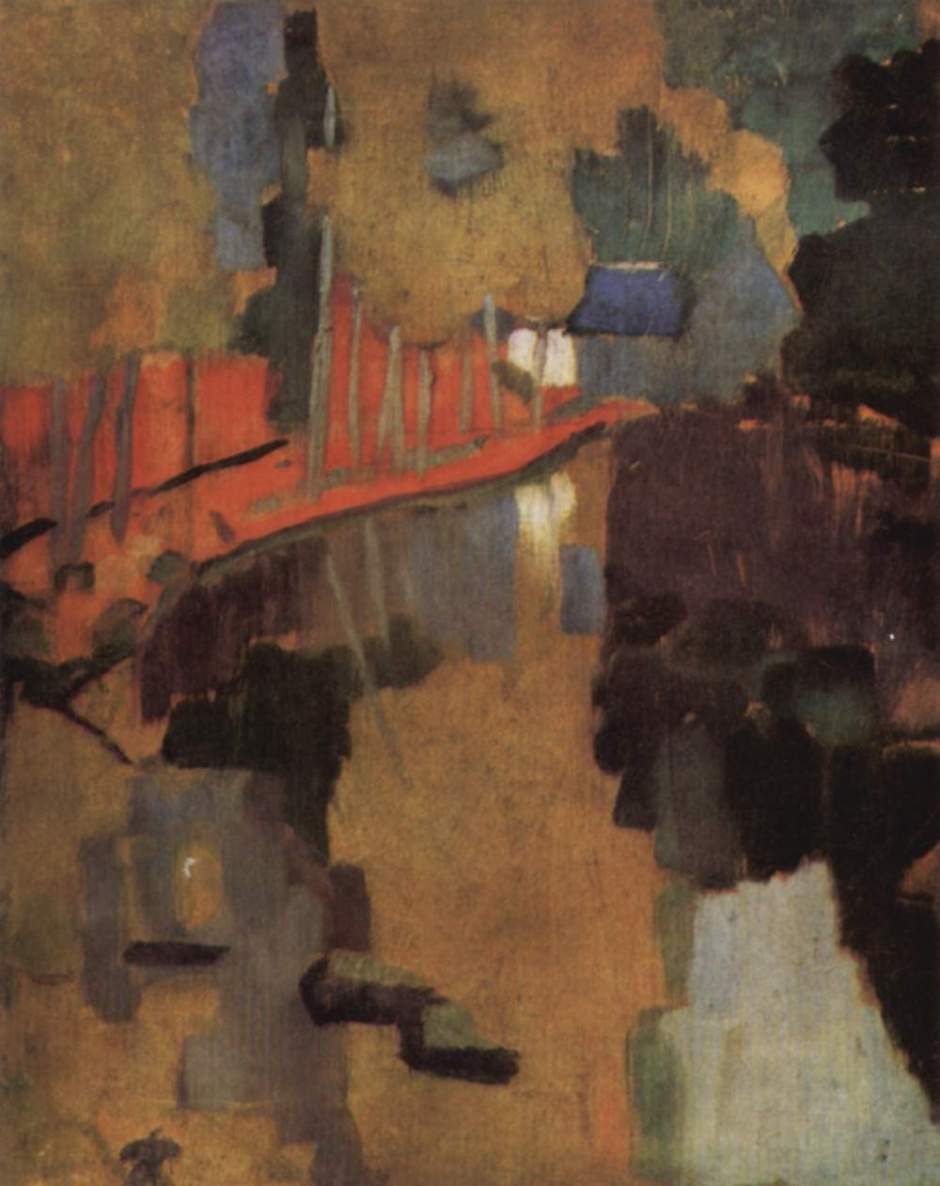Over the last few months, I have systematically worked through the careers and work of those painters who have been associated with the Nabis. Viewed individually, it’s hard to assemble a picture of where they came from, what the Nabis were, and where they went. In this and the following articles in this series, I’m going to draw on what I have discovered so far, trying to derive a better and thoroughly visual account of the Nabis.
The Nabis formed in around 1889 from a group of friends in Paris. Their first outward expression as a group was an exhibition at the Café des Arts or Café Volponi outside the Exposition Universelle in 1889, after the Eiffel Tower had been opened there. The following year Maurice Denis published their manifesto in the journal Art et Critique. At this stage they declared themselves to be Impressionist and Synthesist, the latter linking them to the school of Gauguin, including Émile Bernard, both of whom showed paintings at that first exhibition.
Gauguin and Bernard had met at Pont-Aven in Brittany in 1886, when Bernard had been suspended from the École des Beaux-Arts in Paris.

Breton Girls Dancing, Pont-Aven (1888) is one of Gauguin’s most famous paintings from Pont-Aven, and is typical of his style in the late 1880s, which was such a strong influence on the young artists who gathered there around him.

Émile Bernard’s House among trees: Pont-Aven from the same year shows his close adherence to Gauguin’s style.

Another member of the school was a Dutch formerly realist painter Meijer De Haan, who quickly converted to the new style shown in his Breton Women Scutching Flax: Labour from 1889.

Charles Laval had been painting with Gauguin rather longer, since they met in 1886, and travelled with him to Panama and Martinique in 1887. Laval’s The Aven Stream (1889) shows his affinities. Little seems to be known about his career. Following his early death in 1894, many of his paintings were attributed to Gauguin. Whether Laval was ever a member of the group who became the Nabis isn’t clear.

Paul Sérusier didn’t join the school until the summer of 1888, and prior to that had been quite a realist or even an ally of Naturalism, as shown in The Weaver above, from earlier that year. Under the close supervision of Gauguin, he painted the work which became the touchstone and religious icon of the Nabis, The Talisman, below.


Paul Ranson was a realist with an interest in the supernatural, and still a student at the Académie Julian in Paris when he met Paul Sérusier in 1888. He then changed style quite dramatically, and became a member of the group as it formed into the Nabis.

József Rippl-Rónai had travelled to Paris to study under the Hungarian realist painter Munkácsy Mihály in 1886-87. In 1888, he met and befriended that same group who were forming the Nabis, and changed from his earlier realist or Naturalist style as a result. He then spent some summers with the school of Gauguin in Pont-Aven.

Maurice Denis first came into contact with Gauguin’s paintings when he visited the exhibition outside the Exposition Universelle in 1889, and Le mystère catholique from later that year was an early indication of him following this new style.

Édouard Vuillard had painted in the sketchy post-Impressionist style shown in his still life of a Cup and Mandarin from his student days in 1887-88. He didn’t come into contact with the school of Gauguin until 1889, when he was introduced to it by Maurice Denis, an old schoolfriend.

Félix Vallotton didn’t join the Nabis until after the group had formed. Previously a realist, in 1889 he became fascinated by Japanese ukiyo-e prints by Hokusai when he was exhibiting some of his paintings at the Exposition Universelle in Paris. It wasn’t until 1893 that he became a Nabi.
The central figure for the Nabis before the launch of their manifesto in 1889 was undoubtedly Paul Gauguin. But by the time that they were developing their movement and working together, Gauguin had another project in mind, his trip to Tahiti. In early 1891, he was busy raising funds, and sailed from France on 1 April that year. He didn’t return until August 1893, when he was thoroughly involved in promoting the paintings that he had returned with. Having inspired and launched the Nabis in the late 1880s, he then abandoned them in pursuit of his own art and career.

